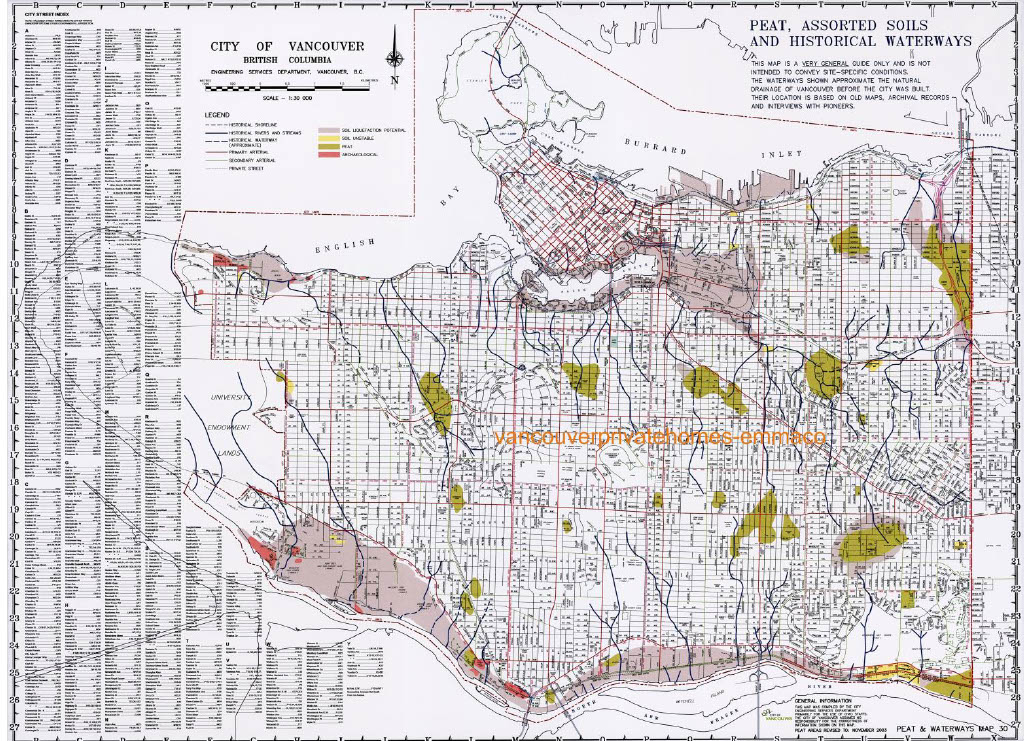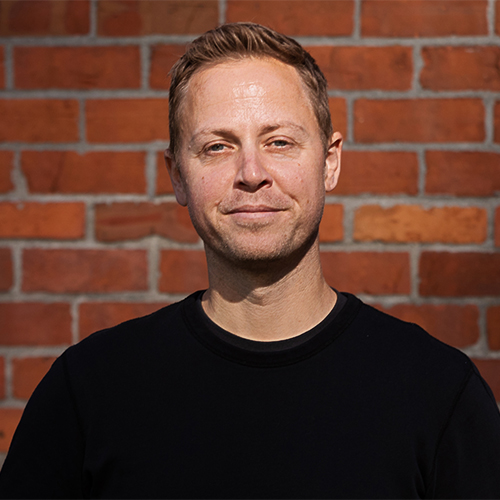Episode 246
Listen to Episode
Listen on: Apple Podcasts | Spotify | Google Podcasts | Stitcher
Updated by Matt Scalena PREC March 29, 2024
Monitor ANY Metro Vancouver real estate market with Realtor-level Data & SOLD PRICES in Real Time.
The Vancouver peat bog, with their unique ecological characteristics, present a distinct set of challenges for construction projects. Building on this type of terrain requires careful planning and innovative solutions to overcome the ground instability, water management issues, and environmental regulations.
Expert builder and co-owner of JDL Homes Vancouver, Jeff Langford joins Adam and Matt to cover all things Vancouver peat bog. Sinking foundations, crowned sidewalks, and shifting rooflines may be the least of your worries if you do not listen up!
-
- What do buyers need to know about potentially purchasing on the peat bog?
- Are there steps existing homeowners can take to mitigate risk?
- How – and at what cost – can you build your dream home in one of Vancouver’s best neighbourhoods that doubles as a wetland?
Guest Information

Jeff Langford
Jeff Langford is one of the owners of JDL Homes Vancouver building new custom homes and renovation services. In partnerships with his brother Doug Langford they are Certified Built Green builders, registered members of the ITA apprenticeship program, members of the Home Builders’ Association Vancouver (HAVAN) and participants in the Renovator’s Council.
Episode Summary
Thinking of selling a Vancouver property? Our Proven Strategies Work!
Peat Bog Map Vancouver
The Vancouver peat bog map is a useful tool but should not be relied on for 100% accuracy.

What is the Peat Bog in Vancouver?
Peat bogs are a wetland terrain that is primarily composed of accumulated decaying plant material known as peat. Peat is slow-decomposing organic matter. It is moss that has built up over the years and is slowly decomposing. The environment it creates is highly acidic. Vancouver has quite a few peat bogs throughout the city. Everyone has seen it and driven through areas where masonry is cracked, none of the gates work and you can see the houses are unlevel. That’s par for the course for houses that are unsupported when they were built on peat.

Keep your finger on the pulse of Vancouver’s real estate market with our Live Wire email newsletter.
Challenges of Building on Peat Bog
Constructing homes on peat bog has a number of challenges, primarily due to the unique physical and chemical properties of peat. These challenges complicate the building process.
Ground Instability and Settling Issues:
The foundational challenge of building on peat bogs is the ground’s inherent instability. Put another way, peat doesn’t have a lot of structure to it. It is waterlogged organic material – basically a sponge full of water – that compresses under weight, leading to differential settling. This can result in structural damage over time if not properly managed, making foundation design a critical consideration for any project on peat.
Moisture Content and Water Management:
In the mid 1900s, we tried to drain the wet areas of Vancouver & right on top as if it was structurally sound. That was a mistake as we have found that peat’s high moisture content poses significant challenges for construction.
Effective water management strategies are essential to prevent flooding and water damage, especially in areas prone to heavy rainfall like Vancouver. This requires innovative drainage solutions that balance the need for dry building sites with the ecological necessity to maintain the water levels that support the peat bog ecosystem.
Keep your finger on the pulse of Vancouver’s real estate market with our Live Wire email newsletter.

Building on Peat Bog – Techniques & Solutions for Vancouver
Depending on the type of peat and depth of peat (which you find out in consultation with a geo-technical engineer), there are a few options.
Option 1 – Remove the peat
The first way to potentially deal with peat is to remove it. This only works if you have just a few feet of peat. You basically dig down until you find something strong enough to bear the weight of the house. The only caveat here is the water table. There is a chance that if you start pumping out the water you find as you dig it could upset the balance of land not only on your lot but on neighboring land with the potential to disrupt & sink your neighbors’ house.
Option 2 – Helical Piles
Helical piles are the most economical and safest way to build on peat.
A helical pile is a steel foundation support, resembling a large metal screw, that is drilled into the ground to provide stability for the home. A builder will drill a helical pile and screw it into the ground. A grid is then designed to support the entire weight of the house. The geo-tech will tell you how many piles are needed and how deep they need to be. Each pile must be able to hold a certain amount of weight to support the house. It can get complex, so you want to work with an experienced builder who is familiar with peat bogs.
One note is we haven’t been using helical piles for that long in Vancouver. We now have several different manufacturers; not all of them are the same. The metal needs to be treated and coated when you’re working with an acidic product like peat so again it is imperative to work with n experienced builder.
Sign up for insider real estate news & tips from our podcasting team.
Building on Peat Bog: How much does it cost in Vancouver?
Costs are always changing – especially with the inflation of the last few years – but it really depends on the land & the project. The simplest peat bog build adds about $40,000-50,000 on top of the cost of a regular build but sometimes it can add up to $500,000. The majority of builds are on the lower end of that scale from $50,000 to $500,000.
One of the main costs is the geo-technical engineers. They are not cheap but they take on a horrendous amount of risk. Their cost is warranted as a lot can go wrong.
How much longer does it take to build a house on the peat bog in Vancouver?
Once you buy your home, and have your builder, you employ a geo-technical engineer. They will conduct testing to see how deep your piles need to go. The slab of your house in this case is almost a separate entity. It is fully structural and engineered.
Then you design your house based on the findings of the engineers & the required foundation. All of that work is done up front. It does add a bit of time, but it’s mostly organizing the drilling materials.
Can you have a basement in a house on the peat bog Vancouver?
We have built houses on the peat bog that have full basements where the basement is submerged in water in wintertime. The basements are fully waterproofed & that is very costly and complex.
Usually there are no basements in new homes on the peat bog which makes it cheaper but you do lose that square footage.
When you build on bog land do you lose square footage? Other downsides?
Yes. Losing possible square footage is a big deal, especially in Vancouver. Plus you also have a lower lot value, which never really goes away. Even if it’s brought up to code, it will still be lower value than a house on solid ground. But if it’s a long term investment, why not? You’ve got to hold it to make it worth it.
A friend of mine lives on Trout Lake with a view of the park and we renovated their home a few years ago. The house has a huge footprint so we were able to jack up a few corners and remove the fireplace, which weighs down on the bog. But before then, the house was quite crooked. And that’s just part of that community.
Thinking of selling a Vancouver property? Our Proven Strategies Work!
Other Advice for People Considering Buying or Building on Peat Bog
- Peat doesn’t have to be scary. There are costs involved but it is possible and easy to build on. If you get it at the right price, there is nothing wrong with it. You will have a perfectly sound house in the end. And some of the best micro-neighbourhoods in Vancouver are on peat.
- There is a lot of misinformation around what it takes from a cost perspective to live on the bog safely. The helical piles are charged by the foot, so the costs can vary widely depending on the depth of the bog.
- If you are concerned about a property being on the peat bog, the first step is to consult the peat bog map Vancouver (above). You can also call the city of Vancouver for a more accurate analysis of the soil of the property. In the end, soil testing is the most accurate way to determine whether or not the property lies on the peat bog.
Get the edge you need to succeed in buying and selling real estate in B.C. with help from our tips, insider insights, and more.
Episode Hosts

Adam Scalena
Adam is a full-service realtor, specializing in Vancouver’s best areas. His systematic approach to real estate and dedication to his clients has consistently placed him within the top 10% of realtors operating within Greater Vancouver.

Matt Scalena
Matt is real estate obsessed and considers himself a lifelong student of the Vancouver real estate market. As a co-manager of the Scalena Real Estate team, Matt prides himself on expertly advising buyers and sellers on all aspects of the fast-paced, dynamic Vancouver real estate market. He is present at every stage of the process, from that first phone call or email right through to when keys are exchanged between sellers and buyers.
Episode Resources
Episode Sponsor
VREP2020 for realtors or aspiring agents who want to join.





